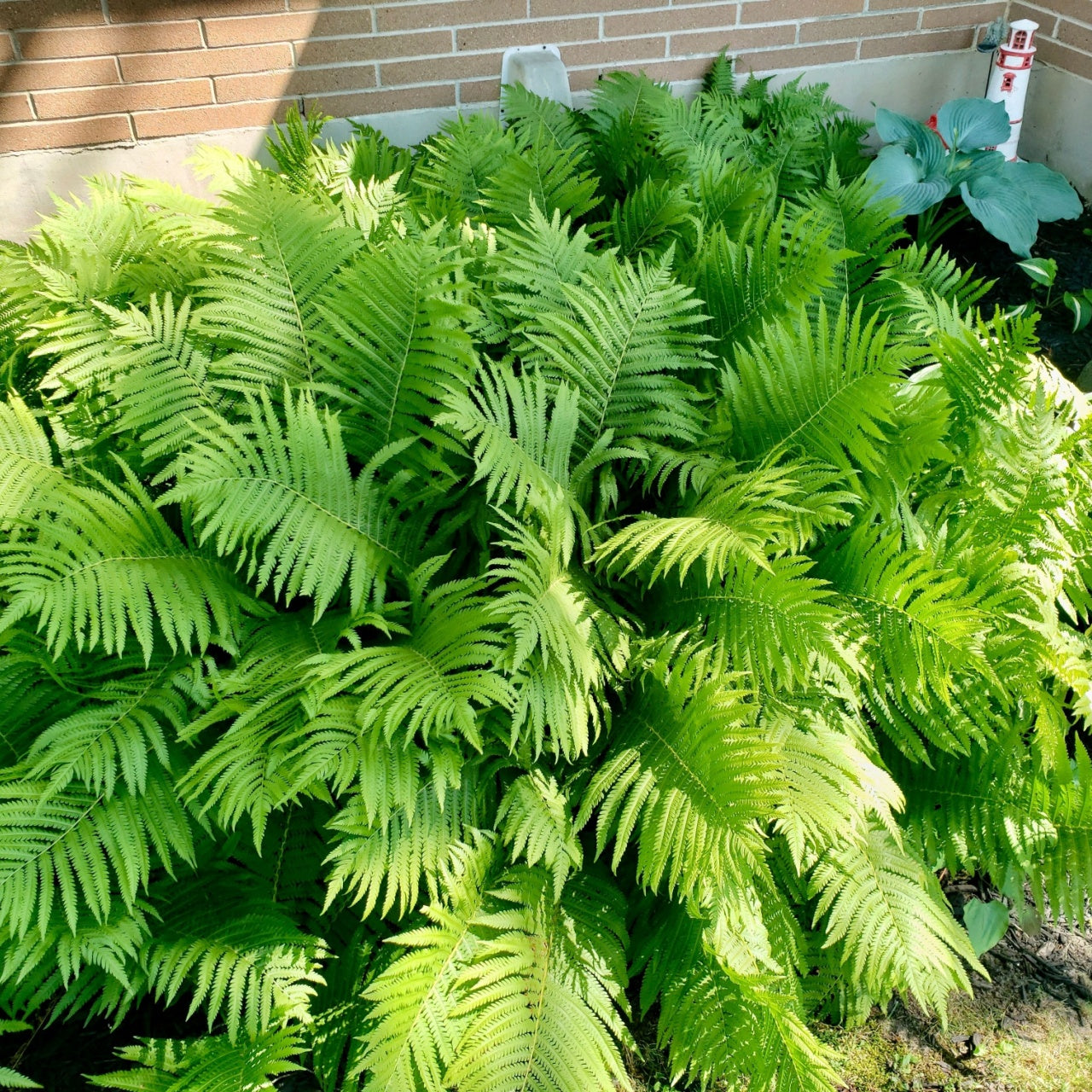Do ostrich ferns spread quickly?
Ostrich ferns are known for their vigorous growth and ability to form lush colonies over time, making them an excellent choice for gardeners looking to quickly fill a space with greenery. They spread through underground rhizomes, sending new fronds each year to extend their reach. While this growth can seem rapid in the right conditions, especially in rich, moist soil, it is typically manageable and rewarding. Gardeners love ostrich ferns for the beautiful, feathery foliage filling woodland gardens, borders, and shaded areas. Their growth is noticeable but not overly aggressive, creating a natural look that enhances garden landscapes without overwhelming other plants. However, it's essential to give them space to grow. Their root systems appreciate room to expand, and when given proper care, they can flourish year after year, creating a thick, vibrant fern bed.
Where is the best place to find ostrich ferns?
Ostrich ferns thrive in shaded or partially shaded locations, making them ideal for woodland gardens or the shadowed edges of buildings, trees, or fences. Native to North America, they are often found growing along stream banks, in the dappled light of forests, and in areas with high moisture content. When planting ostrich ferns in a home garden, replicate their natural habitat. Look for areas with indirect light and consistent moisture levels. Shaded corners, under trees, or along water features like ponds or streams are perfect spots for these ferns. They prefer more excellent areas that receive protection from harsh sunlight, which can dry out their fronds. Gardeners can also find ostrich ferns at local nurseries, where they are often sold as starter plants. Choosing healthy specimens with green fronds and strong roots is best, as they will adapt more quickly to their new environment. Whether sourced from nature or nurseries, ostrich ferns reward gardeners with their graceful arching fronds, creating a lush green display.
When should I plant ostrich ferns?
Planting ostrich ferns is best done during the cooler months of early spring or autumn when the soil is moist. These ferns appreciate the damp conditions that spring showers or autumn rains provide, giving them the best chance to establish strong roots before the heat or the frost sets in. In spring, the ferns begin to send up their characteristic fiddleheads, and planting at this time ensures they have the moisture and nutrients they need to thrive. If planting in autumn, it's essential to give them enough time to settle before the first frost so they can focus on root growth and be ready to send up new shoots the following spring. Once planted, ostrich ferns generally require minimal attention beyond ensuring moist soil. Once established, they can tolerate various conditions, but regular watering during dry spells will help them stay lush and healthy.

What pairs well with ostrich fern?
Ostrich ferns are versatile and pair well with various shade-loving plants, creating beautiful and harmonious garden compositions. Their large, arching fronds make a stunning backdrop for smaller perennials and woodland plants. For example, pairing ostrich ferns with hostas creates a dynamic contrast between the hosta's bold, variegated leaves and the fern's feathery texture. Both plants enjoy similar growing conditions and can create a lush, layered look in shaded areas. Another excellent companion is the bleeding heart plant, whose delicate, heart-shaped flowers bring color and contrast to the fern's greenery. The soft pinks, whites, or reds of bleeding hearts pair beautifully with the bright green of the ferns, and both thrive in shady, moist environments. Spring bulbs like trilliums and jack-in-the-pulpits also make excellent companions for ostrich ferns. These native wildflowers bloom early, adding interest and color before the fern fronds fully unfurl. As the ferns grow taller, they provide a graceful canopy over these shorter plants. Lastly, ground covers like ajuga or creeping Jenny can fill in around the base of the ostrich fern, creating a carpet of foliage that helps retain soil moisture while adding a different texture and depth to the garden bed.
With their timeless elegance and ease of care, Ostrich ferns are a perfect addition to any shaded garden. Their ability to spread and fill out a garden bed makes them a valuable landscape plant for those who appreciate a lush, green look without needing constant maintenance. These ferns provide year-round interest, even in winter, as their tall, architectural fronds turn a golden brown, strikingly contrasting the bare trees and frost-covered ground. As part of a well-planned shade garden, ostrich ferns bring beauty and functionality, serving as a backdrop for blooms and ground covers while helping to keep the soil moist and cool. Whether planted in groups or as part of a border, their natural grace adds elegance to garden spaces, offering a peaceful, woodland-inspired retreat for gardeners and wildlife alike.
























































 " alt="Featured Collection Perennials " />
" alt="Featured Collection Perennials " />
 " alt="Featured Collection Ferns " />
" alt="Featured Collection Ferns " />
 " alt="Featured Collection Live Moss " />
" alt="Featured Collection Live Moss " />
 " alt="Featured Collection Trees " />
" alt="Featured Collection Trees " />
 " alt="Featured Collection Shrubs " />
" alt="Featured Collection Shrubs " />
 " alt="Featured Collection Vines " />
" alt="Featured Collection Vines " />
